Surgical procedure has success rates of 80-100 percent
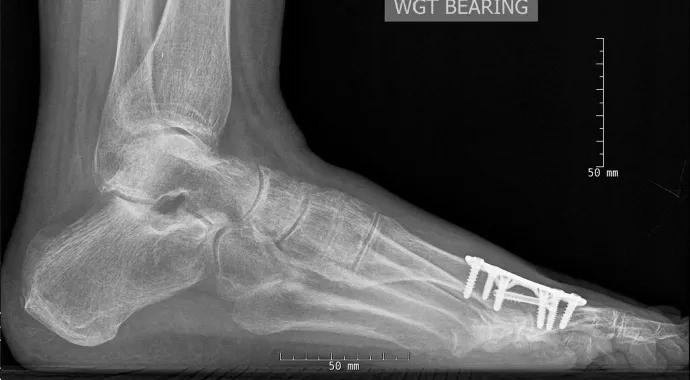
By James Sferra, MD; Mark Berkowitz, MD; and Aaron O’Brien, MD
Cleveland Clinic is a non-profit academic medical center. Advertising on our site helps support our mission. We do not endorse non-Cleveland Clinic products or services. Policy
Hallux rigidus, a deformity secondary to degenerative arthritis, is one of the most common conditions affecting the first metatarsophalangeal (MTP) joint. It typically presents with the classic findings of restricted dorsiflexion with pain, swelling and synovitis. It can be classified both clinically and radiographically (grades 0-4) according to range of motion, degree of pain, dorsal osteophyte formation and joint space narrowing.
Conservative treatment consists of NSAIDs, orthotics with a Morton’s extension to restrict first MTP joint motion, rocker-bottom shoes, taping, activity modification and (rarely) corticosteroid injections. While these methods can be effective in improving symptoms, especially in less severe cases (grades 0-1), surgical treatment remains a viable option for alleviating most symptoms when conservative treatment fails.
In mild-to-moderate disease (grades 1-2), a synovectomy and cheilectomy can achieve good results, including reduced pain and increased dorsiflexion. Occasionally a proximal phalangeal osteotomy (Moberg) is needed to improve dorsiflexion in conjunction with the cheilectomy. If an osteochondritis dissecans lesion is encountered, microfracture can be performed to improve the chance of a better outcome.
More advanced cases with severe degenerative arthritis (grades 3-4) require salvage procedures, which include arthrodesis, excisional arthroplasty, soft tissue interpositional arthroplasty or prosthetic replacement.
Arthrodesis is the most common surgical procedure for advanced disease, with success rates of 80 to 100 percent, depending on fixation technique and preoperative diagnosis. There are very few contraindications, and beyond hallux rigidus, the procedure also is indicated for failed interpositional, resection and implant arthroplasties. Although patients need to appreciate the restricted motion associated with arthrodesis, gait analysis after fusion shows improvement in propulsive power, weight-bearing function of the foot and stability during gait.
Our preference at Cleveland Clinic is to use conical reaming with a dorsal precontoured compression plate and an occasional independent lag screw (Figure). In contrast to flat cuts, the conical reaming allows for adjustments to correct the alignment in multiple planes. This construct has been shown to be 16 times stronger than crossed K-wires alone, with fusion rates ranging from 93 to 100 percent. The main advantage is that it allows earlier weight-bearing. Our patients typically start partial weight-bearing at three weeks and progress to full weight-bearing by six weeks. By eight weeks, they typically are back in their normal shoes and bearing their full weight.
Figures
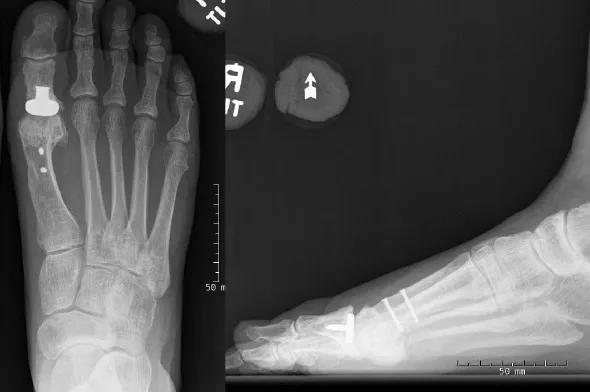
Preoperative anteroposterior and lateral weight-bearing X-ray views of a 54-year-old woman with a five-year history of right first MTP joint pain. Hemiarthroplasty and metatarsal osteotomy were performed 10 years earlier.
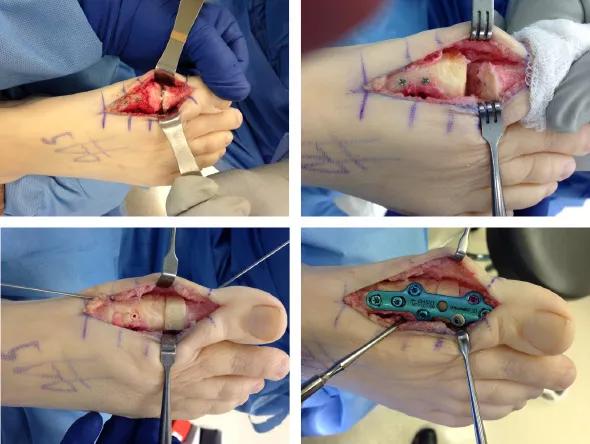
Intraoperative images showing the hemiarthroplasty implant in place but loose (top left) and then removed (top right) and replaced with an intercalary bone allograft (bottom left) followed by placement of a dorsal plate and screws (bottom right). BMP-2 was placed on both sides of the graft into the intramedullary canals of the phalanx and metatarsal.
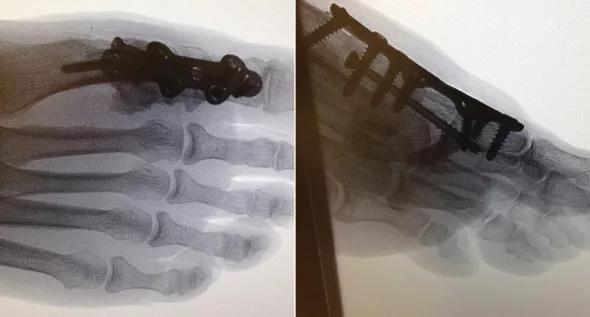
Postoperative anteroposterior and lateral fluoroscopy images of the first MTP joint with the allograft and hardware in place.
Joint replacement arthroplasty is a viable option in some individuals, especially sedentary women who want to wear heeled shoes. The procedure maintains some motion for severe arthritis of the first MTP joint, but high complication rates have limited its use, regardless of whether hemi- or total arthroplasty is used. A recent study comparing hemiarthroplasty with arthrodesis found that arthrodesis was more predictable in alleviating symptoms and restoring function with a significantly lower complication rate.1
Arthrodesis is the most commonly used salvage procedure when arthroplasty of the first MTP joint fails. Leading causes of failure include component loosening, subsidence or fragmentation; infection; and residual pain or instability with resection arthroplasty. At Cleveland Clinic, we have found that salvage arthrodesis with removal of the implants and insertion of an intercalary graft provides a reliable solution to an otherwise difficult problem.
Our experience has revealed some differences from primary arthrodesis:
Although complication rates are higher with salvage arthrodesis for failed arthroplasty, it can still serve as a predictable and reliable option to alleviate pain and restore function.
Dr. Sferra was a surgeon in the Foot and Ankle Center in the Department of Orthopaedic Surgery.
Dr. Berkowitz is a surgeon in the Foot and Ankle Center in the Department of Orthopaedic Surgery.
Dr. O’Brien is a clinical fellow in the Department of Orthopaedic Surgery.
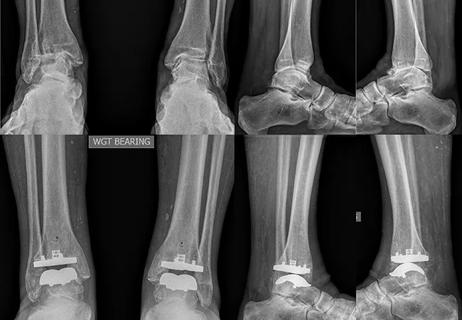
Arthrodesis is not the only surgical option
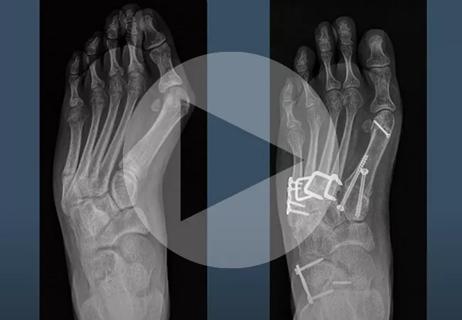
Surgeon corrects skew foot to address repeat injuries

Pain, quality of life and other patient-reported data are significantly improved one year after surgery

Many amputations can be prevented

Ankle arthritis can be more disabling than hip or knee arthritis
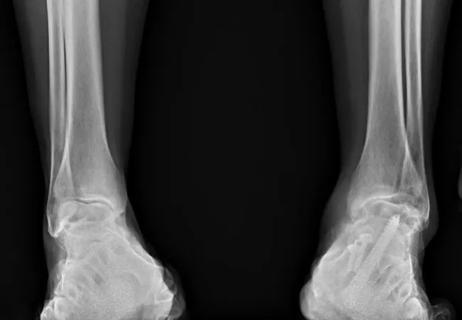
Staged cavus repair and total ankle arthroplasty
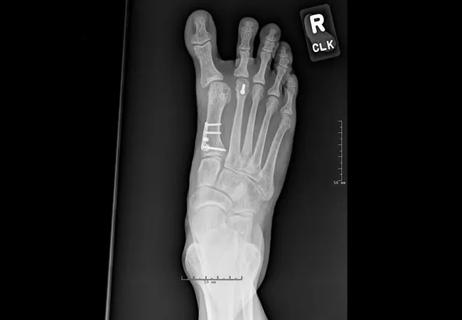
Causes are multifactorial, but good surgical decision-making and technique reduce failures
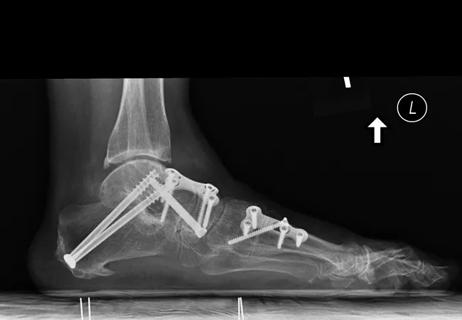
Valgus tibiotalar tilt tough to treat, common